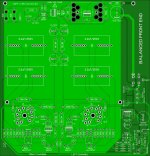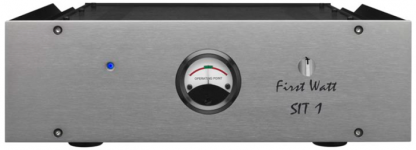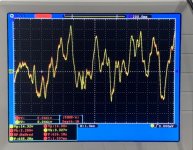Do I gain anything in SQ by using a Capacitans multiplier after a SMPS?I have used a 48v variant of this same type of supply. They have an annoying fan which can be swapped with a Noctua, problem solved. They are actually very quiet based on FFT’s that so have taken. They might suffer from startup hiccup mode if you have too much rail capacitance. I think up to 10,000uF should be ok. I used to drive my TPA3255 which had dual 4700uF and it worked fine. But when I tried driving 2x 22,000uF it did not work. But, there is a simple slow start circuit that I have that can fix that. I used it on my VFET amp.
No, only if it has a lot of ripple. But if it is already quiet then not needed. However, a capacitance multiplier circuit sometimes provides a slow ramp up and that prevents the SMPS from going into hiccup mode. To solve that, a simple SSR based DC soft start circuit can used like the one here.
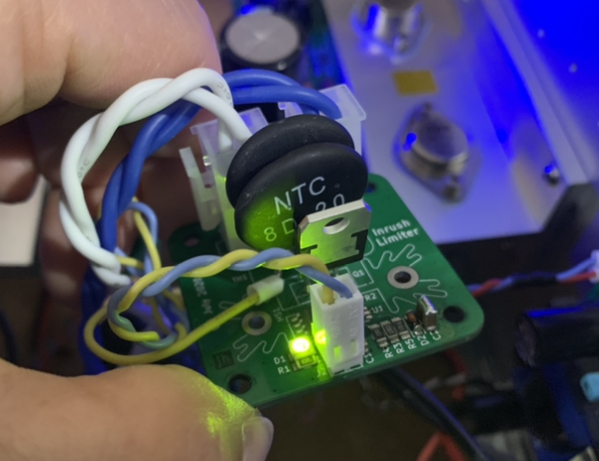
I can share the gerbers if you are interested.
It would be fantastic, thanks!

There you go. Front end PCB and power supply PCB.
2SK170BL need to be matched. If you intend to use the pot for H2 adjustment
use the values from PCB, if not, the 620ohm resistors, have to be replaced with 500ohms and do not populate the 5K POT. For testing purpose (mute section is not required), just power up the FE before LuFo. Any doubt, let me know.
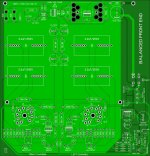

View attachment FE.zip
View attachment PS.zip
2SK170BL need to be matched. If you intend to use the pot for H2 adjustment
use the values from PCB, if not, the 620ohm resistors, have to be replaced with 500ohms and do not populate the 5K POT. For testing purpose (mute section is not required), just power up the FE before LuFo. Any doubt, let me know.


View attachment FE.zip
View attachment PS.zip
Actually, thank you for your design, now the hybrid FE + LuFo is on top of my list. I will follow your progress with SuSyLu and I will definitely build one.
Gain can be easily adjusted via R16, R17. A dip switch can be mounted on PCB to adjust gain, but complicates the H2 adjustment.
View attachment 962958
I think it would be enough to have only two selectables gain settings: one for driving power followers and the other for driving 10/15dB voltage gain power amps. Eventually it would easier to have a fixed H2 level for Hi and Lo gain. Yes, I know, the "honey amount" level like Sit-1 or H2 preamp is soo tempting... 😀
Last edited:
I have a 6 position DIP switch on my preamp connected to an array of 0.5% Susumu metal thin film resistors to set gain as follows: 0dB / 6dB / 14dB / 20dB. All OFF gives 0dB gain. I find that this range lets me drive any amp properly. Coupled with the 22dB fixed gain on the OPA454 FE, I choose 6dB for 28dB overall. For the DIYA VFET which has 10dB gain, I pick 14dB for 24dB overall. For a TPA3255 with PFFB it has 15dB gain, I pick 14dB and get 29dB overall. It works out really well. For most general purpose use, the 6dB is a nice setting to have on a preamp. If I could only have two settings they would be 6dB and 14dB. 🙂
Last edited:
Yes, I was thinking to full 24dB and his half (12dB) that would be good for the majority of cases. For 0dB we all have at least one B1  😀
😀
 😀
😀I wanted to point out something that Vunce and I discovered about using inductors not specifically designed for audio as a choke load on SE Class A folllower amps like the LuFo or MoFo. We have a test track we play to test the bass response of an amp. It’s “Hey Now” by London Grammar. In this track, there is a deep almost infrasonic bass that is unrelenting. We found that with this track, and when the LuFo is played at high power, there is some distortion from clipping of high frequency crescendos due to the inductor getting its magnetic field all depleted from the excessive continuous sub 30Hz bass. Vunce swapped out the MOT with a Hammond 193V and we get the same behavior. I tested the track on another amp (my 50w MoFo that also uses a MOT) and I also get the same behavior. It’s just with this track. 99% of my other songs, I never hear any sign of this bass induced high frequency clipping.
I hooked up my oscilloscope to look at the input signal (yellow) from the OPA454 FE and the speaker output (red) and lined them up so that they overlap for the most part. They will be a bit different because the amp gain is slightly less than 0dB. But it will show clipping. So playing music at about 14Vpp, quite a good volume and close to what normal listening levels are, the two traces track each other:

When I increase the amp volume to play about 40Vpp with this song with its long sustained 30Hz bass line, we see peculiar occasional clipping of the downward going high frequency peaks. Note that it only occasionally clips a certain peak and is not consistent because it depends on the time dependent stored magnetic energy in the inductor:

Running a LTSpice simulation, if I make the inductance only 20mH and drive it with 40Vpp 50Hz waves, I see a similar asymmetric clipping after the 3rd cycle. So the transient analysis shows that it had enough energy for 3 deep cycles if there is only 20mH. Setting it to 60mH there is no issue in the simulation.
I am hopeful that this goes away when we use a properly designed-for-audio inductor. The inductor, as Daanve rightly pointed out, needs to hold 60mH at bass frequencies. I would be happy with 40Hz as 20Hz might make for a very large and expensive custom inductor.
Anyhow, just wanted everyone to be aware of this potential issue if using readily available low cost MOTS or even Hammond power filter chokes which were designed for mains power filtering and not audio. The Lundhals, if designed for audio, might actually be able to handle this test track?
For most musical programming without sustained bass lines - it works fine. If you play bass riff heavy music loudly, choke loaded SE Class A amps may not be the best choice.
I hooked up my oscilloscope to look at the input signal (yellow) from the OPA454 FE and the speaker output (red) and lined them up so that they overlap for the most part. They will be a bit different because the amp gain is slightly less than 0dB. But it will show clipping. So playing music at about 14Vpp, quite a good volume and close to what normal listening levels are, the two traces track each other:
When I increase the amp volume to play about 40Vpp with this song with its long sustained 30Hz bass line, we see peculiar occasional clipping of the downward going high frequency peaks. Note that it only occasionally clips a certain peak and is not consistent because it depends on the time dependent stored magnetic energy in the inductor:
Running a LTSpice simulation, if I make the inductance only 20mH and drive it with 40Vpp 50Hz waves, I see a similar asymmetric clipping after the 3rd cycle. So the transient analysis shows that it had enough energy for 3 deep cycles if there is only 20mH. Setting it to 60mH there is no issue in the simulation.
I am hopeful that this goes away when we use a properly designed-for-audio inductor. The inductor, as Daanve rightly pointed out, needs to hold 60mH at bass frequencies. I would be happy with 40Hz as 20Hz might make for a very large and expensive custom inductor.
Anyhow, just wanted everyone to be aware of this potential issue if using readily available low cost MOTS or even Hammond power filter chokes which were designed for mains power filtering and not audio. The Lundhals, if designed for audio, might actually be able to handle this test track?
For most musical programming without sustained bass lines - it works fine. If you play bass riff heavy music loudly, choke loaded SE Class A amps may not be the best choice.
Attachments
Last edited:
Or maybe dedicate a LuFo with a cheap inductor to the high end in a bi-amp setup?
Yes, that would be ideal or let a big Class AB or Class D amp handle the bass. Asking a SE Class A amp to drive subwoofer frequencies is probably not the best use of its refined capabilities.
Or maybe dedicate a LuFo with a cheap inductor to the high end in a bi-amp setup?
That's what I am planning with a build of Ben Mah's follower;
https://www.diyaudio.com/forums/pas...-choke-loaded-2sk180-lamp-33.html#post6672486
He very kindly ran some Spice simulations - see the posts that follow the one I linked to. I will be using Lundahl LL1694 inductors (windings in parallel so 40mH 3A). Bass will be via a Class D amp or perhaps a class AB 75W Mosfet amp.
I plan to build a LuFo to drive some full-range single-driver speakers in another system so it would be great if the inductor group buy flies.
Last edited:
- Home
- Amplifiers
- Pass Labs
- LuFo Amp - 39w SE Class A from 28v Rail
